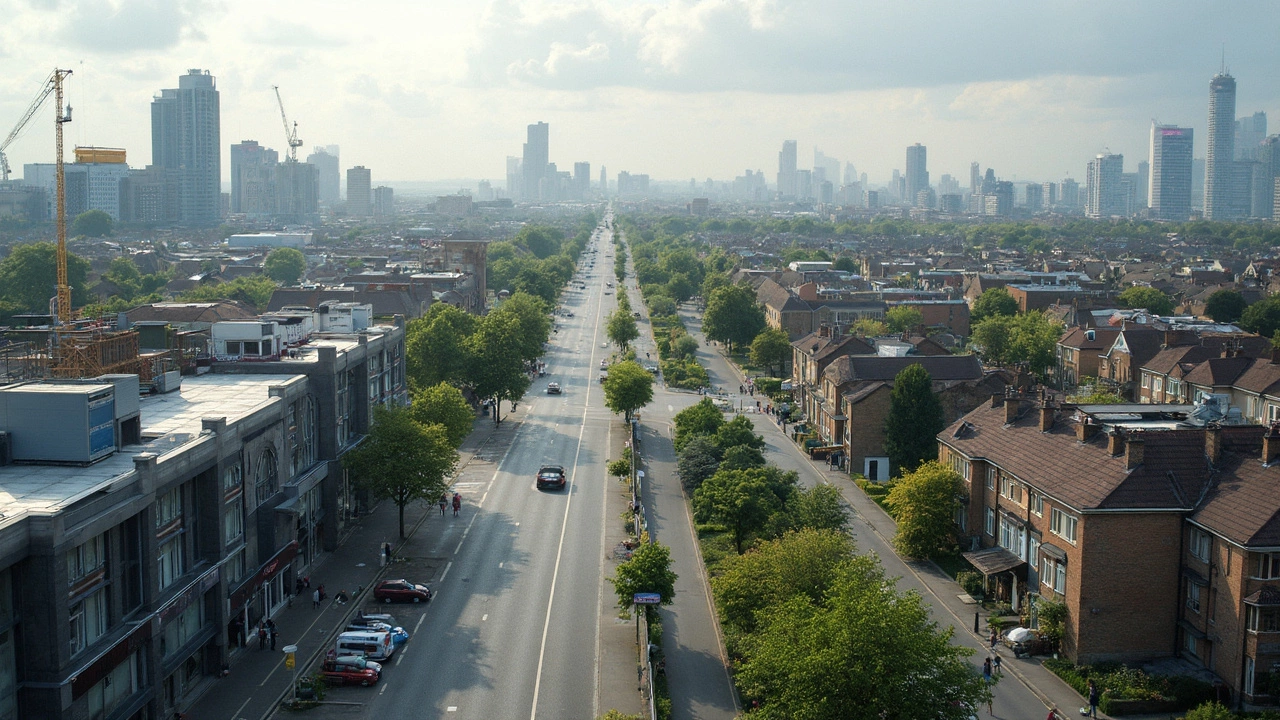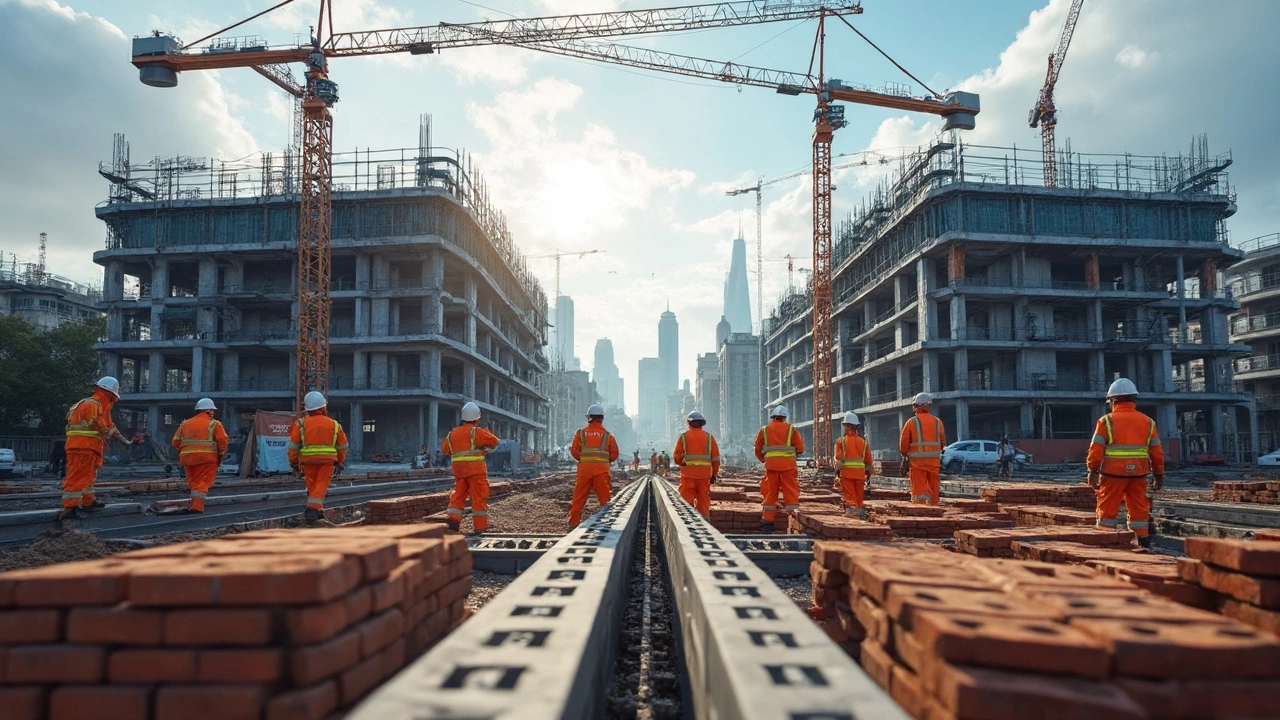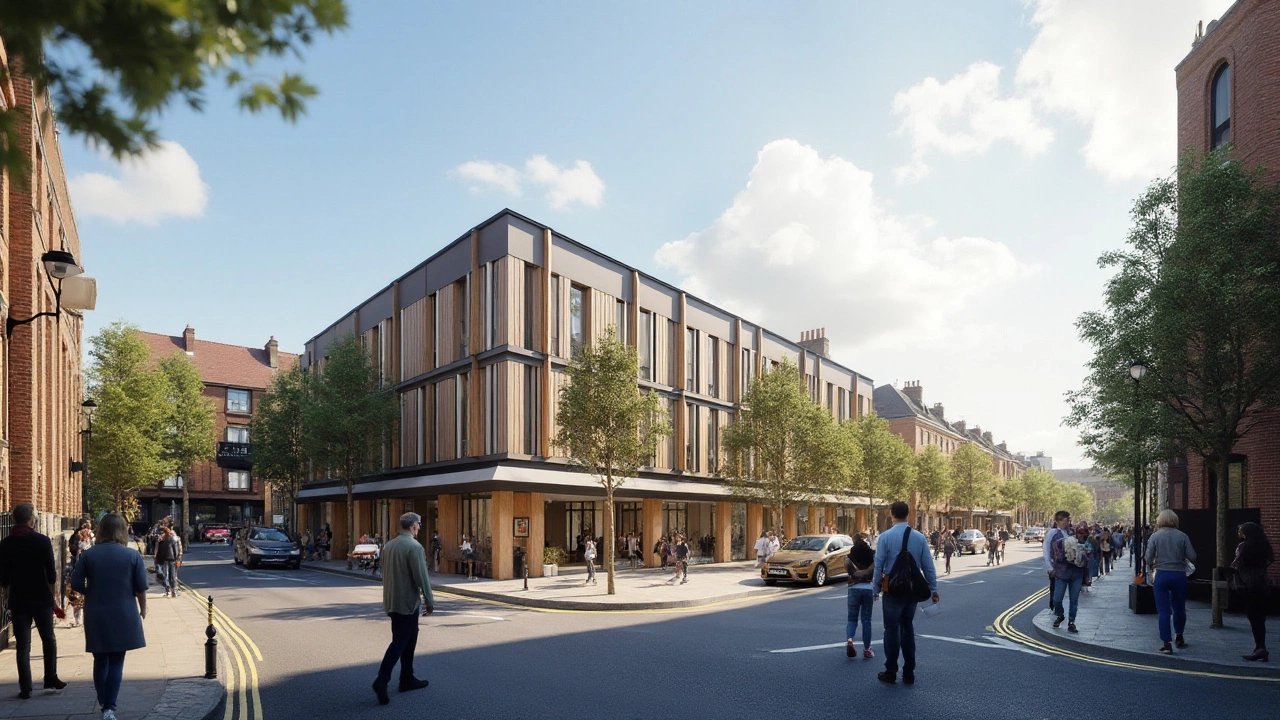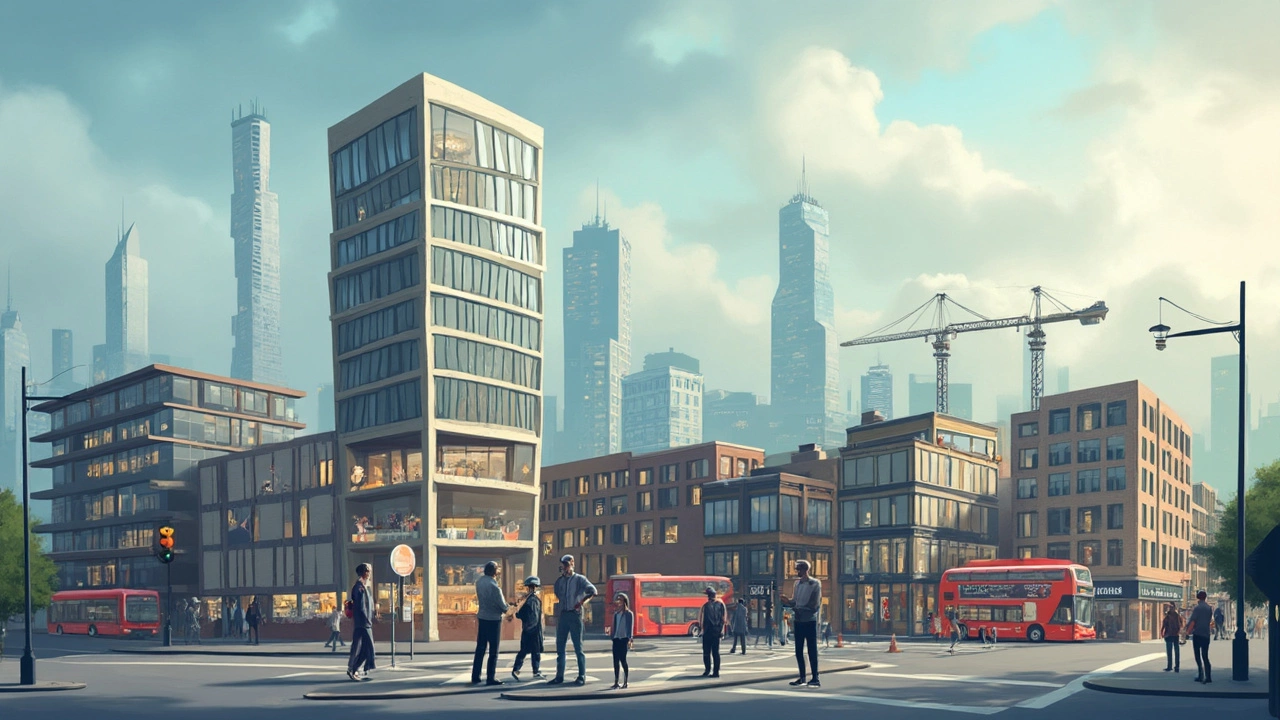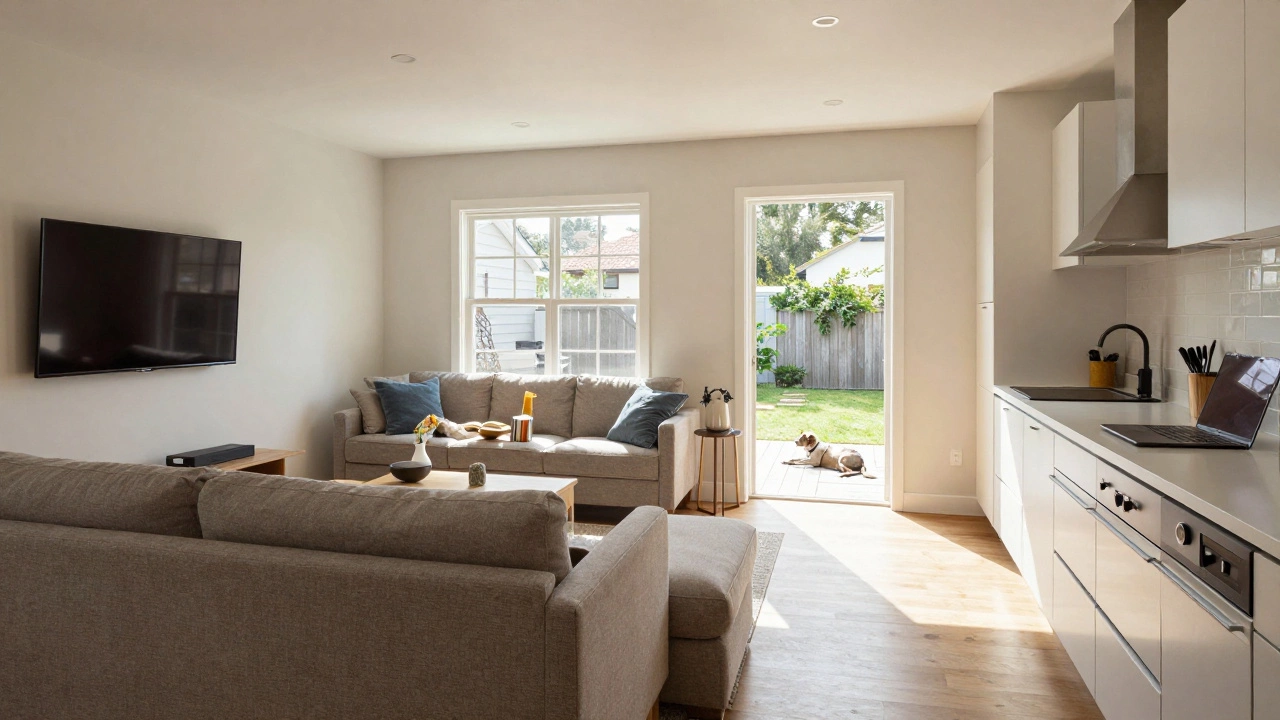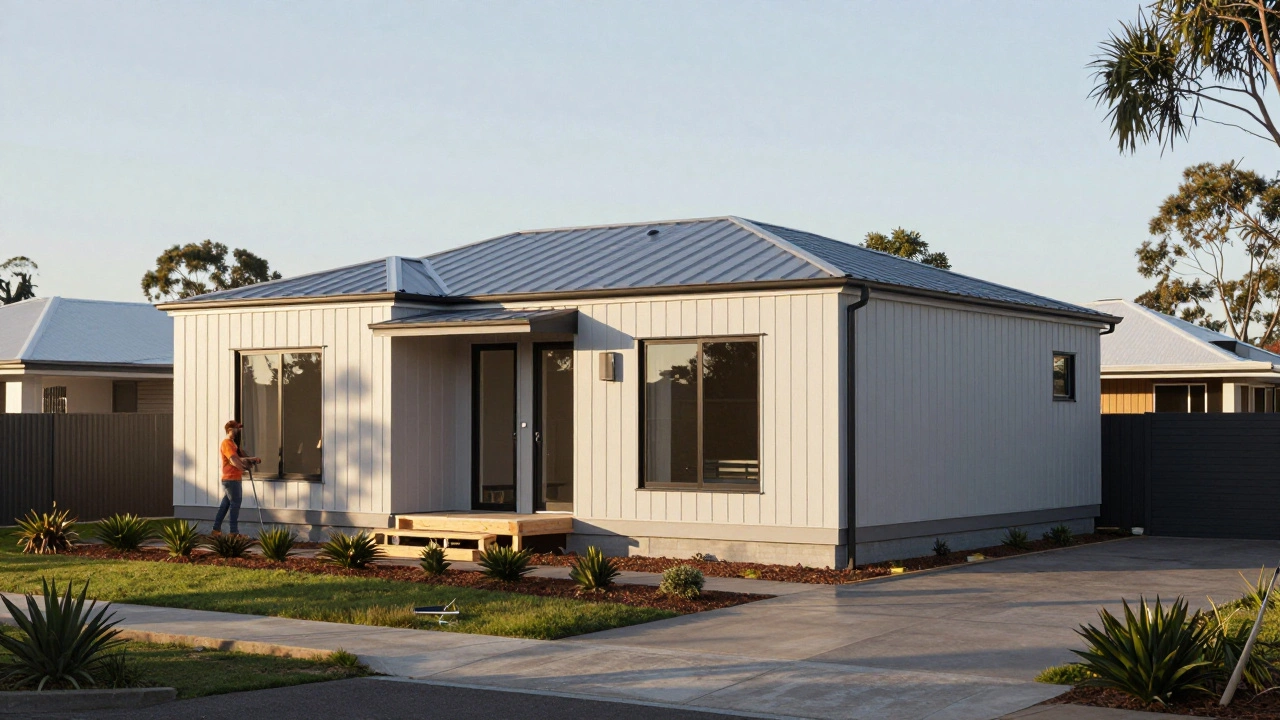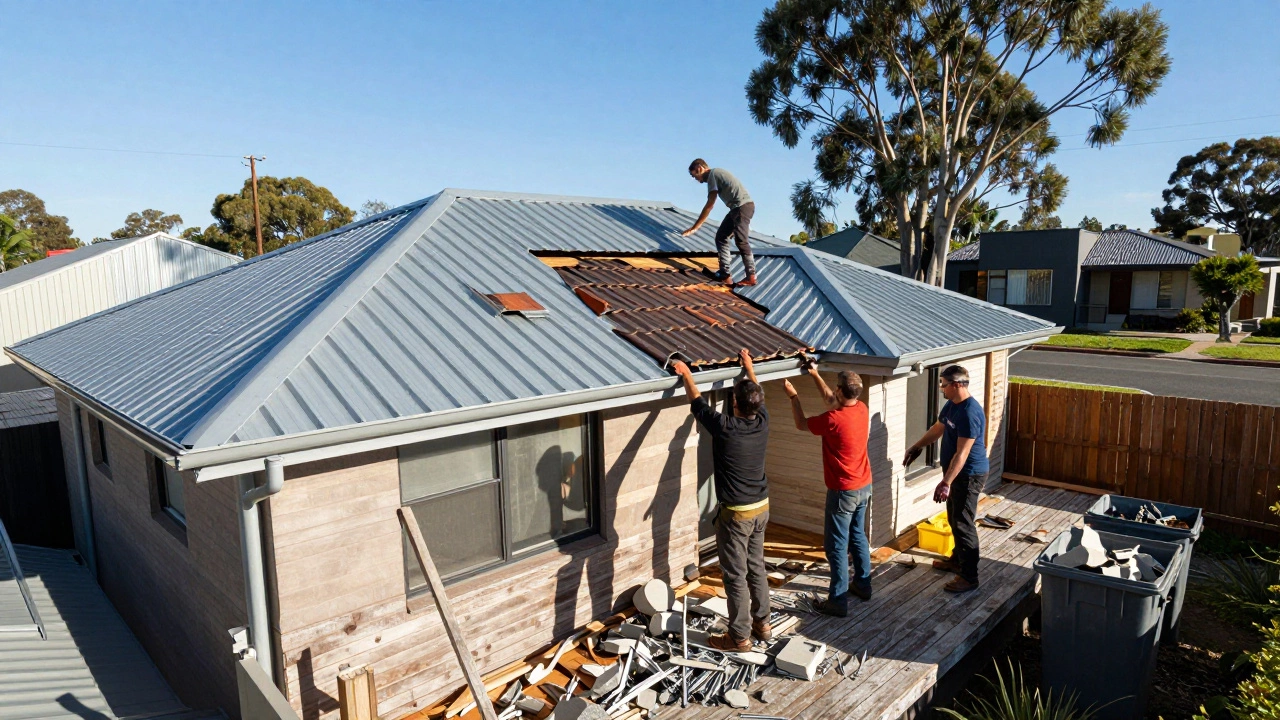Here’s a simple fact: If you don’t get the difference between commercial and non-commercial construction, you’re rolling the dice on budget, permits, and who’s even allowed to build your project. This stuff gets real fast—one wrong move could mean fines or work getting shut down.
Commercial means business, literally. If a building is there to make money or serve a big group of people—like shops, offices, schools, or hospitals—it falls into this bucket. Think of that shiny new supermarket or a busy day care center. Non-commercial? That’s usually private, like your house or a friend’s backyard shed. But it can get muddy—what if someone works from home, or rents out part of their house?
This split affects everything from fire rules to taxes. Forget what some people say about ‘size’—it’s more about use and who walks through the door. With the right know-how, you can dodge expensive mistakes before picking up the phone to call a contractor.
- Breaking Down the Basics
- Common Examples You See Every Day
- Key Differences—It’s Not Just About Money
- Rules, Permits, and Inspections
- Smart Moves: Tips for Your Next Project
Breaking Down the Basics
If you’re stuck on what makes a construction project commercial construction instead of non-commercial, it comes down to two things: how the space is used and who uses it. A commercial building is set up for things like selling stuff, providing services, running offices, or hosting lots of people. Non-commercial spaces are generally for personal use—homes, tiny sheds, even those detached garages your neighbor uses as a gym.
The real test is simple: Is the place about doing business or running public activities? If yes, you’re in commercial territory. Private homes and spaces just for the people who live there are non-commercial. Sounds simple, but watch out—things like home daycares, Airbnb rentals, or a bakery run out of a garage can blur those lines. The bottom line is purpose: if there’s money being made or a public group coming in, it’s almost always considered commercial.
Here’s a quick breakdown to help nail this down:
- Commercial Construction: Stores, restaurants, warehouses, hotels, schools, clinics.
- Non-Commercial: Houses, apartments (for personal living), private garages, backyard playhouses.
You might think commercial projects are always bigger or more expensive, but that’s not always the case. What really matters is what the space is used for and who it serves.
Numbers tell the story, too. In 2024, U.S. spending on commercial construction hit $133 billion, while new housing stayed strong at over $840 billion—not as small a slice as you’d expect, right? More people are mixing business and home spaces, so these rules matter now more than ever.
| Type | Main Purpose | Typical Users |
|---|---|---|
| Commercial | Business, Public Service | Business Owners, General Public, Employees |
| Non-Commercial | Private Living | Homeowners, Tenants, Family |
Get this part right at the start and you’ll save lots of headaches. The rules, permits, and even what kind of insurance you need depend on where your project sits in this split.
Common Examples You See Every Day
It’s easy to spot the difference between commercial and non-commercial buildings once you know what to look for. You’ve probably walked by or used both types today without even thinking about it.
Commercial construction covers places where business gets done or services are provided to a bunch of people. It’s not just about shopping malls or sky-high office buildings—there’s a whole range of spots that fit. Here are a few you see all the time:
- Supermarkets like Walmart or Target—massive foot traffic, open long hours, and stocked nonstop.
- Office buildings, whether it’s a ten-story glass tower or a small law firm suite.
- Restaurants and fast food joints—we’re talking about everything from McDonald's to your mom-and-pop café.
- Hotels and motels, serving traveling customers 24/7.
- Healthcare centers and hospitals, designed for both staff and patient safety with strict codes.
- Schools and universities—think wide corridors and sturdy playgrounds.
- Warehouses and distribution centers, where inventory rules the day.
On the flip side, non-commercial construction mostly means buildings for private use, usually a single family or a small group. Would you let a stranger wander into your backyard shed? Didn’t think so. Here are some clear examples:
- Detached homes, condos, and apartment units where people live—not work.
- Private garages or sheds for your lawn gear, bikes, or holiday junk.
- Personal workshops, as long as they’re not selling products or bringing in clients.
- Small community centers built by neighborhood associations (as long as they don’t run for profit).
There’s a quick way to spot the difference: if people go there to buy, work, or get a service, odds are it’s commercial. If it’s just for living or non-paid gatherings, that’s non-commercial territory.
| Building Type | Commercial | Non-Commercial |
|---|---|---|
| Supermarkets | ✔️ | |
| Private Homes | ✔️ | |
| Office Buildings | ✔️ | |
| Garages (Personal Use) | ✔️ | |
| Restaurants | ✔️ | |
| Schools (Public/Private) | ✔️ |
According to the U.S. Census Bureau, nearly 70% of new construction spending in 2024 was still tilted toward commercial projects. That’s everything from retail chains to clinics. Knowing these examples helps you spot where your next project fits—saving you from headaches with zoning boards or permit offices.
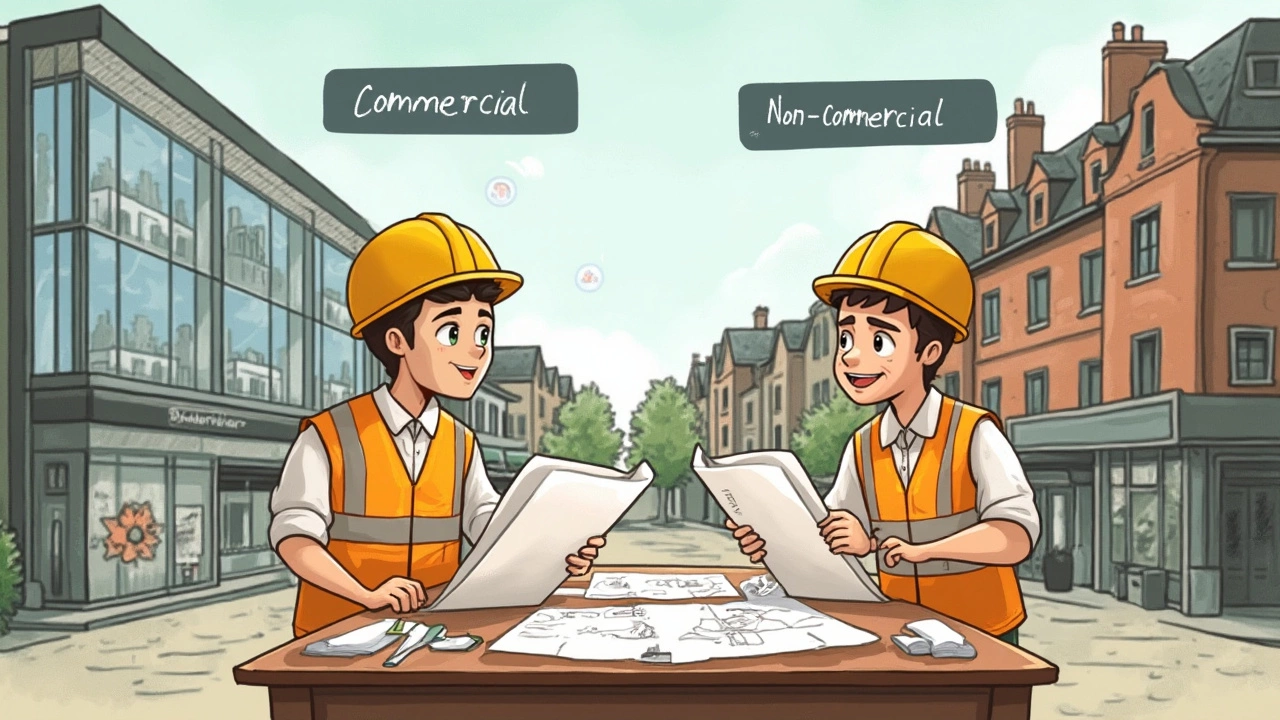
Key Differences—It’s Not Just About Money
You might think the big split between commercial and non-commercial construction is about cash—and sure, money matters. But there’s way more going on. It’s about who uses the building, how the law treats the project, and even the safety steps you’re forced to follow.
Here’s what really sets commercial construction apart from personal or non-commercial projects:
- Users: Commercial buildings are made for the public or for business operations—think customers, patients, or workers. Non-commercial spots are meant for private use, like homes or small hobby shops.
- Rules & Codes: The codes for commercial buildings are way stricter. There are more fire exits, handicap access rules, and energy standards. Residential rules are simpler and often cheaper to follow because fewer people are at risk.
- Approvals: Commercial projects need extra sign-offs. These can include complex zoning checks, neighborhood approvals, or environmental reviews. Even the paperwork for renovations is more intense.
- Insurance: Premiums on commercial jobs go through the roof—there’s more liability because more people could get hurt or complain about something going wrong.
Check out this quick side-by-side to see where things differ the most:
| Factor | Commercial | Non-Commercial |
|---|---|---|
| User Type | Public/Employees/Clients | Personal/Family |
| Typical Permits | Multiple layers, ongoing checks | Usually basic, one-time permits |
| Code Complexity | High (ADA, fire, environmental) | Lower, basic safety |
| Insurance Costs | High | Much lower |
| Project Teams | Large crews, specialists | Small teams or DIY |
A helpful stat? About 75% of project delays in the commercial sector are due to permit or inspection issues, not budget problems. This shows how being clear on your project type upfront can save months of headaches.
Bottom line: Don’t get fooled by thinking a building’s purpose isn’t a big deal. It shapes every step—from design, to inspections, to what you’ll pay in the end.
Rules, Permits, and Inspections
This is the part where a lot of good ideas stall—rules for commercial construction mean business. Everything from permits to how often a city inspector pokes around changes once your building isn’t just a place to sleep. If you’re building a store or office, you’ll need more paperwork, tighter inspections, and a longer approval process than if you’re just putting up a garage at home.
Permits for commercial projects usually cover:
- Building layout and design checks
- Safety codes (think fire exits and sprinklers)
- Electrical, plumbing, and sometimes even parking requirements
Inspectors actually go on site, making sure you’re not cutting corners. Skip a permit or fall short on a code, and they can shut your project down—sometimes forever. According to the National Institute of Building Sciences, over 65% of commercial building delays in the U.S. link back to missing paperwork or failed inspections.
| Aspect | Commercial | Non-Commercial |
|---|---|---|
| Permit Needed? | Always | Usually, but less strict |
| Fire Safety Checks | Frequent | Rare |
| Inspections | Multiple, ongoing | Mostly just final walkthrough |
| ADA Compliance | Required | Not usually |
Don’t forget Americans with Disabilities Act (ADA) rules. Every commercial space open to the public has to be accessible. That means ramps, bathrooms, signs—the whole deal. Skipping this can cost you big, sometimes six figures in fines.
The takeaway? Start by calling your local permit office early, and get every rule in writing. It saves time, money, and a lot of stress down the road.

Smart Moves: Tips for Your Next Project
Let’s get real—building or renovating is stressful enough, so you don’t want paperwork or confusing rules slowing you down. Here’s what you can do to avoid trouble and get things moving, whether you’re putting up a new c-store or finally turning that old shed into a playhouse.
- Commercial construction jobs always need more permits, more inspections, and usually special insurance. Don’t guess—call your city or county office first and ask what’s required. Missing a code update or fire safety feature can shut your whole project down fast.
- For homes and smaller non-commercial buildings, rules can be more relaxed, but don’t ignore basics. Even a small deck or garage sometimes needs a permit if it’s over a certain size—double-check before you buy materials.
- When in doubt about your property’s legal use, hire a local architect or licensed builder for an hour of their time. They’re familiar with all the grey areas—like live-work spaces, mixed-use zones, or renting out a part of your house. That advice can keep you from an expensive redo.
- Ask for everything in writing. Bids, timelines, and proof of permits should hit your inbox, not just get mentioned during calls or meetings. It protects you when surprises pop up.
- If you’re hiring contractors, work with pros who actually know the rules for your type of project. Someone great with houses isn’t always ready for the stricter codes and timelines that come with building a business storefront.
Check out this table to see how the basic requirements stack up between commercial and non-commercial projects:
| Requirement | Commercial | Non-Commercial |
|---|---|---|
| Permits | Always, with stricter rules | Usually for major work |
| Inspections | Multiple and detailed | Fewer, simpler |
| Fire Safety | Fire alarms, sprinklers, clear exits | Basic smoke/CO alarms |
| Insurance | Special commercial insurance needed | Regular home insurance usually OK |
| Zoning Limits | Tightly controlled—location, signage, parking | Some limits, mostly for safety or appearance |
If you plan ahead, lean on local experts, and keep paperwork organized, you’ll move your project from blueprint to done without nightmares. Skipping these steps might save you a couple hours at first, but it’ll probably cost you weeks (or thousands) later if you miss something that matters to your city or insurance company.

